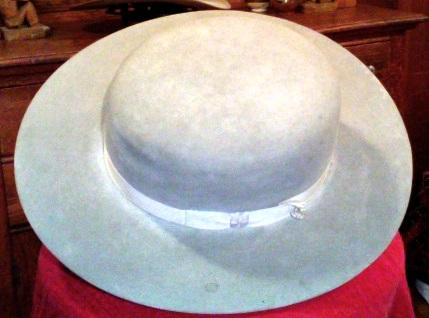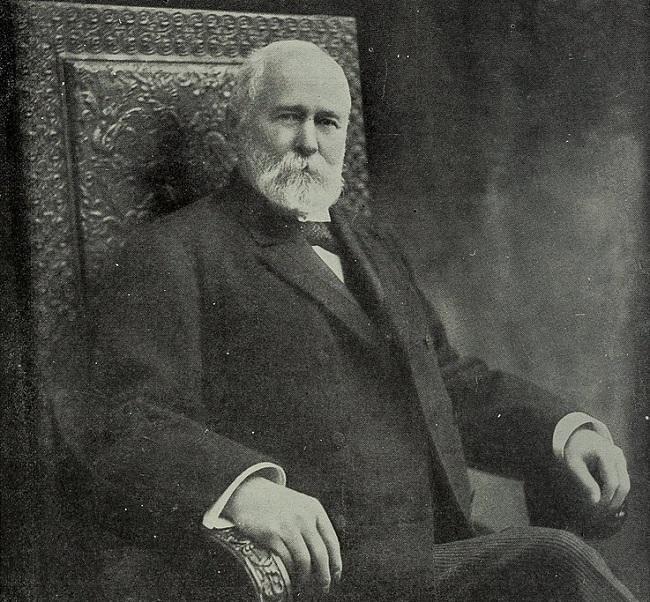The Stetson Hat: An Emblem of the American Spirit
The Stetson hat is an iconic symbol of the American West, a testament to the pioneering spirit of the country and a representation of the rugged individualism that has shaped the United States. Founded in 1865 by John B. Stetson, the Stetson brand remains synonymous with quality, craftsmanship, and the spirit of adventure. This biography traces the origins of the Stetson hat and its creator, the evolution of the brand, and its impact on popular culture, fashion, and history.
The Early Years of John B. Stetson
The story of the Stetson hat is an intricate tale of resilience and ingenuity, interwoven with the life of a man who turned his battle with the wilderness into an iconic American business that has persevered for over 150 years. John Batterson Stetson, born in Orange, New Jersey, in 1830, was the son of Stephen and Susan Batterson Stetson, a family with twelve children. As the son of a hatter, Stetson left school early to learn the trade, but soon fell ill with tuberculosis. Doctors advised him to travel westward from his home state to ease his ailment.
Tuberculosis and John B. Stetson’s Western Adventures
Tuberculosis is an infectious disease typically caused by Mycobacterium tuberculosis (MTB) bacteria. It generally affects the lungs but can also impact other parts of the body. Most infections are asymptomatic and referred to as latent tuberculosis. However, about 10% of latent infections progress to active disease, which can be fatal if left untreated. Symptoms of active TB include chronic cough with blood-containing mucus, fever, night sweats, and weight loss. Infection of other organs can lead to various symptoms.
Tuberculosis (TB) played a pivotal role in shaping the life and career of John B. Stetson. In his early twenties, he contracted tuberculosis, then called consumption, which was considered a fatal disease at the time. With the knowledge that he may not have long to live, Stetson left the hat-making business and set out to explore the American West, seeking adventure, gold-mining, and a change of scenery.
During his travels in the West, Stetson noticed the lack of durable, lightweight, fur-felt hat-wear suitable for the region’s inhabitants. With memories of his childhood lessons in hat-making, Stetson used rabbit fur to create a water-repellent hat with a wide brim and tall crown. The hat was versatile, doubling as a vessel to carry water, and providing protection from the elements. His time among cowboys, muleskinners, and gold prospectors helped him understand their needs, and the arid climate of the West improved his health and he was able to recover from Tuberculosis.
The Birth of the Stetson Hat
In 1865, upon returning to the East Coast, Stetson founded the John B. Stetson Company in Philadelphia with the help of a $60 loan from his older sister. He focused on creating high-quality, practical hats for outdoor use, eventually developing the “Boss of the Plains” hat, which combined protection from the elements with stylish design. Stetson made blankets and hats using this technique, selling his first hat to a mule driver for five dollars. He rented a room that served as his initial factory, where he began producing hats and building a national brand by utilizing telegraph and railroad networks. Stetson sent one hat to each dealer in the Southwest, enticing them to order more. By 1889, his business had grown exponentially, and his hats became synonymous with the rugged, adventurous spirit of the American West. They were not only a practical necessity for protecting wearers from harsh weather conditions but also a symbol of status and prestige. As demand for his hats grew, Stetson expanded his operations, opening a larger factory in Philadelphia, which eventually led to his company becoming the largest hat manufacturer in the world.

The Boss of the Plains, designed in 1865 by John B. Stetson, was a lightweight, all-weather hat created for the demands of the American West. It featured a high crown for insulation and a wide, stiff brim for protection from sun and precipitation, making it both durable and waterproof. Made from beaver felt, it took about 42 beaver belly pelts to produce a high-quality hat. This original design eventually inspired the modern cowboy hat.
Building a Legacy
Throughout the late 19th and early 20th centuries, Stetson’s hat empire grew, becoming a staple in American culture with the iconic “ten-gallon” hat symbolizing the cowboy lifestyle. Worn by prominent figures like Theodore Roosevelt, Will Rogers, and Buffalo Bill, Stetson hats were also featured in Wild West shows, further solidifying their association with the spirit of the American West. To accommodate increased production and distribution, Stetson expanded his facilities and continued to innovate in both design and marketing. His company was among the first to offer mail-order catalogs and utilized modern advertising techniques, such as posters, billboards, and product placements in popular Wild West shows like Buffalo Bill’s Wild West Show.
Innovations and Expansion
John B. Stetson expanded his hat manufacturing business in the late 19th century by using traveling salesmen and relocating his factory to a larger, 12-acre site in the quiet northeast area of the city. He prioritized employee welfare, offering well-constructed factory buildings, generous apprenticeship programs, above-scale wages, and rooms for religious, social, and other activities. He established a dispensary, a free hospital, and a building association that provided below-market rate loans for his workers.
Throughout its history, the Stetson Company has been at the forefront of innovation in the hat industry, introducing new styles, materials, and manufacturing techniques. The company was also an early adopter of modern marketing techniques, using posters, billboards, and product placements to promote its brand. As demand for Stetson hats grew, the company expanded its product offerings and opened a larger factory in Philadelphia to increase production and distribution.
Later Years
Stetson spent winters in Persimmon Hollow (now DeLand), Florida, where he became a community leader and philanthropist, endowing an academy that later became Stetson University. After Stetson’s death in 1906, his son G. Henry Stetson ran the company until declining hat sales led to the plant’s closure in 1971.
About the John B. Stetson Company
The John B. Stetson Company, founded in 1865 by John B. Stetson, manufactured the iconic Stetson cowboy hats. Unfortunately, the company ceased manufacturing in 1970 but resumed in the 1980s before going bankrupt in 1986. Stetson hats are now manufactured in Garland, Texas, by Hatco, Inc. The company was initially established in Philadelphia when Stetson decided to mass-produce a hat similar to the one he made for himself during a Western expedition, which later became the prototype for all cowboy hats. The company was innovative and provided various benefits for its employees, like annual bonuses and facilities, in an attempt to dissuade unionization. However, the company faced a decline in sales in the 1950s and 1960s, leading to the eventual shutdown of the Philadelphia factory in the early 1970s.
Conclusion
In conclusion, the Stetson hat embodies the pioneering spirit, rugged individualism, and enduring legacy of the American West. Born from John B. Stetson’s personal journey of resilience and ingenuity, the brand has become synonymous with quality, craftsmanship, and adventure. Over the years, the Stetson Company has evolved and adapted, pioneering new styles, materials, and marketing techniques, all while remaining true to its roots in American culture. From its inception to its impact on popular culture and beyond, the Stetson hat stands as a testament to the power of innovation, determination, and the spirit of the American West.
References:
- https://en.wikipedia.org/wiki/Stetson
- https://www.heddels.com/2018/12/history-behind-stetson-quintessential-cowboy-hat/
- https://nationalcowboymuseum.org/explore/history-of-the-cowboy-hat/
- https://www.stetsonmansion.com/john-b-stetson-biography
- YouTube Video about John B. Stetson
- https://truewestmagazine.com/john-b-stetson/
- https://jmarkpowell.com/how-illness-created-the-cowboy-hat/
- https://www.chron.com/news/houston-texas/texas/article/Stetson-hats-9969496.php
- https://en.wikipedia.org/wiki/Boss_of_the_Plains
- https://en.wikipedia.org/wiki/John_B._Stetson_Company
- https://commons.wikimedia.org/wiki/File:John_B._Stetson,_seated_portrait.jpg
- https://commons.wikimedia.org/wiki/File:1800s_Boss_of_the_plains_5.jpg










